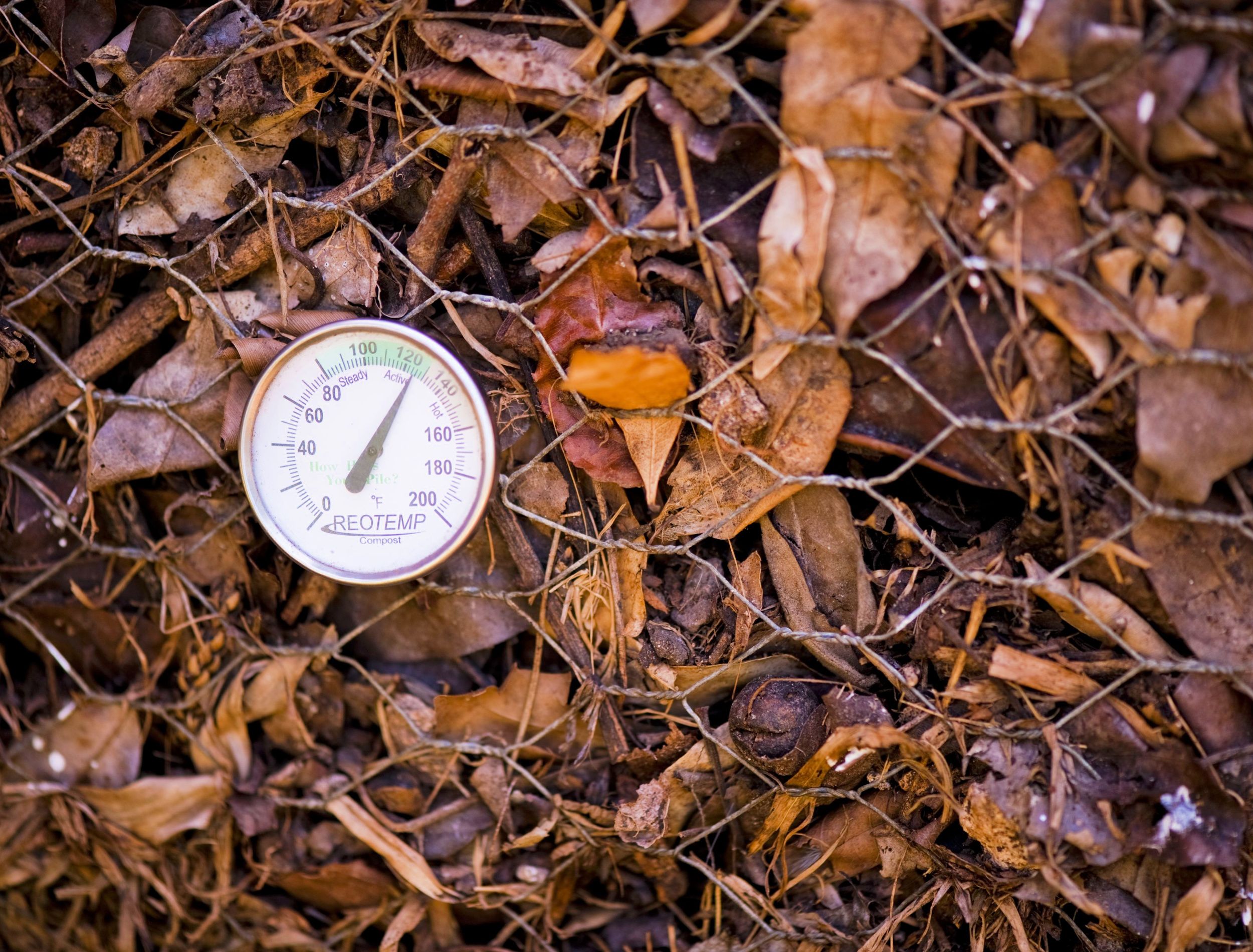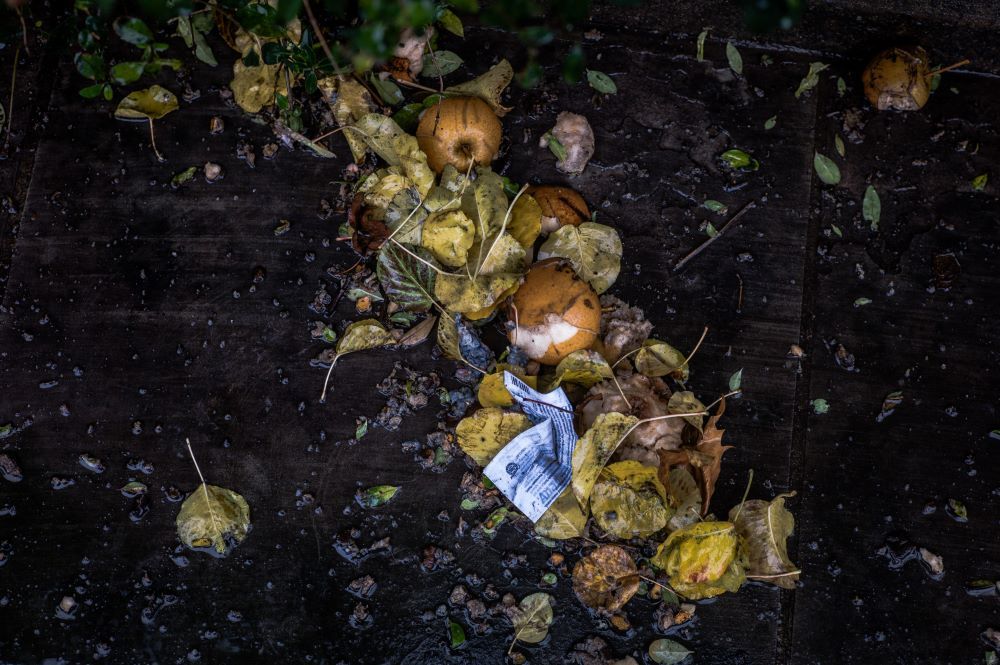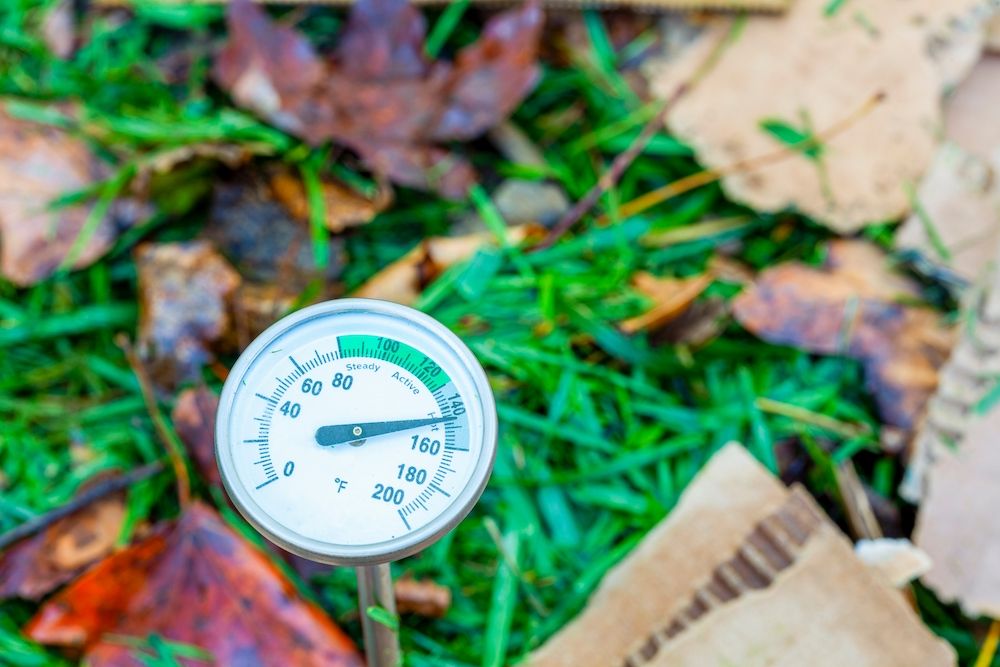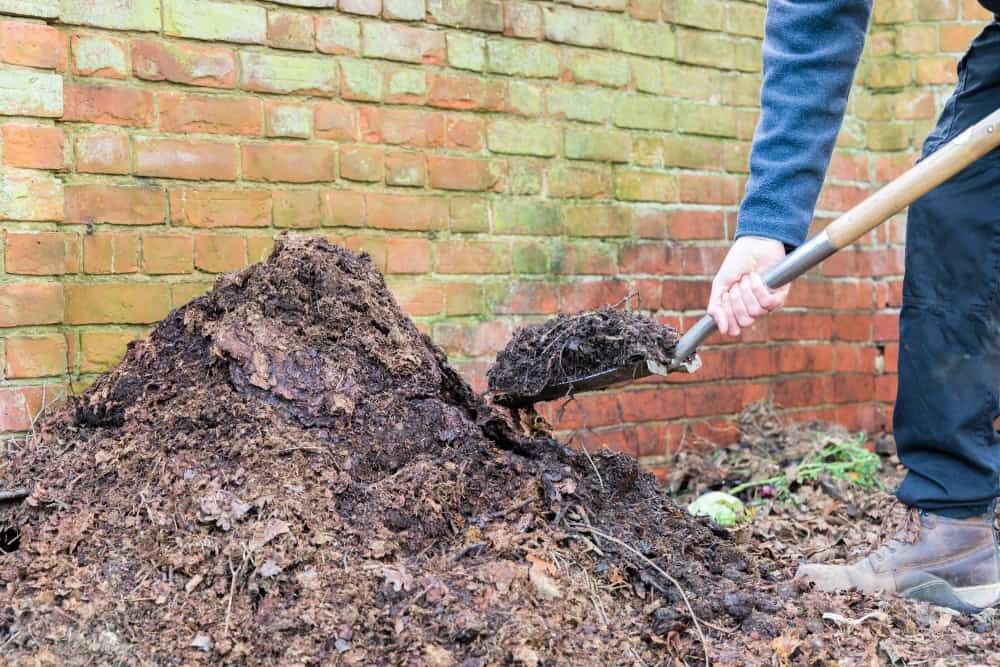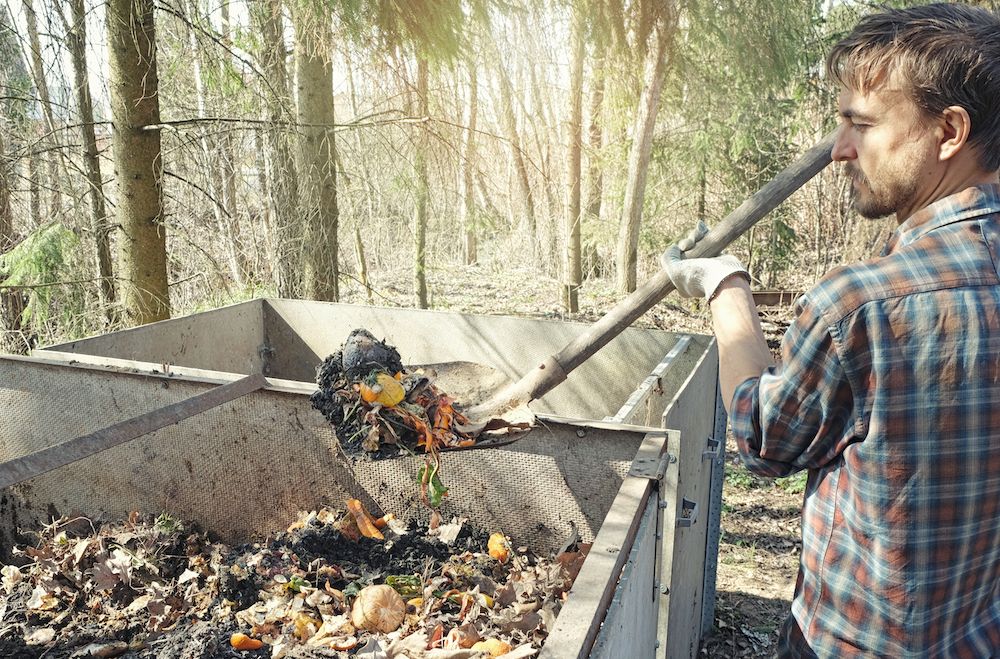Compost is a great way to transform leftover food, kitchen scraps, and other organic matter, like fallen leaves, grass cuttings, and tree prunings, into black gold for your garden. Regardless of your experience with composting, you may have noticed your pile heating up.
Compost starts heating up when beneficial microbes break down the organic material you added to your compost bin. So heat is a good sign that you’ve added the right things to your compost bin. But this raises the question: can compost get too hot? How hot is too hot?
Compost Can Get Very Hot
Image credits: Del Barrett via Unsplash
In extreme cases, compost can get so hot it can potentially catch fire. Granted, this is a rare situation because your compost pile would need to reach temperatures of 300 to 400 degrees Fahrenheit for spontaneous combustion.
It’s unlikely that your backyard compost pile will ever reach such high temperatures, so there’s no need to panic. If you see it steaming in cooler months, don’t confuse it for fire, but call your local authorities to be sure.
Keep your compost’s temperature under 150 degrees Fahrenheit. High temperatures can kill beneficial microbes that break down your pile’s organic matter and increase its risk of combustion. To cool down your compost pile, wear protective gear, and turn or aerate to help dissipate the heat.
If your compost's temperatures kill the beneficial microbes, is there a way to bring them back?
When the temperatures become unfavorable for the beneficial microbes, they form thick spores that can survive extreme heat and cold temperatures. When you cool down your compost, they return to start decomposing the remaining decomposable matter.
How to Monitor Temperatures
Image credits: grandbrothers via Shutterstock
Heat is good for compost because it signifies that you’re doing something right to help transform your organic pile into black gold. The temperature will also tell you the progress of your pile’s decomposition. For example, when your compost temperature hits 104 to 122 degrees Fahrenheit, you know the pile has enough nitrogen and moisture for beneficial microbes to multiply and speed up the decomposition process.
To record your compost’s temperature, you need to take multiple readings using a probe that reaches deep into your compost pile. You can use many fantastic compost thermometers, like Reotemp’s Heavy Duty Compost Thermometer, to take accurate temperature readings.
Insert the probe and leave it in place for the reading to stabilize before pulling it out. Note down the reading and then insert it into a new location. The idea is to take several readings from various depths and sides to get the average temperature. This will also help you weed out colder compost pockets that aren’t as hot as the rest of the pile.
Generally, it takes a well-constructed compost two to three days to reach temperatures between 104 and 122 degrees Fahrenheit. But what if you keep adding to your compost pile; does this affect the temperatures? You'll only keep adding if you're following passive composting — cue in the two main types of composting -- hot and cold.
Cold Composting
Cold composting (passive composting) is easy and doesn't heat up because you continue adding kitchen scraps and garden debris without following a specific schedule or pattern. As the name suggests, cold composting doesn't rely on temperatures to help break down the pile's organic content.
This method can take a couple of years to have any usable compost from passive composting. Since it doesn't heat up, it could contain harmful parasites and weed seeds that could ravage your health and garden.
Hot Composting
Hot composting (active composting) requires some management, schedule, and pattern, and it's a faster process. When hot composting, you'll be following a batch system, meaning you can't add kitchen scraps and garden debris as you go.
In a batch system, you'll need to let the pile heat up and cool down before starting a new batch. If you keep adding organic matter randomly, you'll interrupt the heating process and eventually end up cold composting because new material will cool the already-heating compost.
The idea is to create a compostable batch, close it, let it heat, let it cool down, and use it. The temperatures will spike two to three days after you stop adding anything to your compost pile.
As the decomposable organic matter in your compost pile reduces, the beneficial microbial levels also decline. As a result, the temperatures begin to drop.
The Role Temperature Plays in Creating Black Gold
Image credits: Paul Maguire via Shutterstock
In your hot compost pile, the temperatures will go from:
- Ambient (Room temperature)
- Mesophilic (50 to 100 degrees Fahrenheit)
- Thermophilic (104 to 150 degrees Fahrenheit)
- Mesophilic (50 to 100 degrees Fahrenheit)
- Ambient (Room temperature)
During the compost’s thermophilic stage, beneficial microbes start decomposition by slowly breaking down your compost pile. Depending on the compost pile’s size, this stage can take many weeks and months to complete.
Due to the heat, this stage also destroys some harmful pathogens, insect eggs, fly larvae, and some weed seeds. However, sometimes some parasites survive the thermophilic stage by moving to the far edges of the pile, where it’s not too hot, and become dormant. To reduce the number of dormant pathogens in your compost, let your compost heat up to 104 degrees Fahrenheit for five days.
After which, let temperatures exceed 131 degrees Fahrenheit for four hours. Most pathogens won’t survive temperatures between 140 and 150 degrees Fahrenheit. Once the temperature reaches 150 degrees Fahrenheit, turn or aerate your compost pile to cool it down.
The temperatures will fall slightly when you turn it. But, if more decomposable organic matter is in your compost pile, the temperatures will increase in two to three hours. You must avoid unprotected contact with compost because of some dangerous pathogens that spread illnesses.
How to Avoid Potential Composting Hazards
Image credits: Gargonia via Shutterstock
Composting is the best gift you can give to your garden and your plants. Compost improves your soil’s health, structure, and fertility and gives your plants the nutrients they need for healthy growth. However, as with everything, precaution is key. Here are some potential compost hazards you should avoid.
|
Always wear breathable gloves when handling compost. |
|
When turning your compost, wear a proper mask to avoid inhaling airborne fungal spores. |
|
Wear protective footwear to prevent injury or direct compost exposure. |
|
Don’t store compost in airtight containers, as it can become combustible. |
|
Wash your hands thoroughly after handling compost. |
|
If you develop a cold, cough, or infection, seek medical attention immediately. |
|
Don’t add hot organic material to your compost. Let it cool first. |
|
Turn your compost every few days or once a week to keep it ventilated. |
|
Don’t turn extremely hot compost at temperatures above 160 degrees Fahrenheit, as sudden exposure to oxygen can cause the compost to catch flames. |
|
Don’t let the pile get too dry or too wet. |
|
Ensure your compost pile is vegetarian, as adding non-veg items can attract pests and large critters. |
|
Add a layer of topsoil or leaves to mask the smell that attracts pests and rodents and to aid decomposition. |
Some Compost-Dwelling Pathogens
Some of the most notorious pathogens that live in compost are:
|
Aspergillosis |
It causes fungal lung infection if you accidentally inhale its spores. While it’s not fatal, it can be if someone with pre-existing lung problems inhales it. |
|
Farmer’s Lung Disease |
Resembles pneumonia and can result from exposure to pathogens dwelling in compost. Avoid exposing yourself to dusty white patches in your compost. |
|
Histoplasmosis |
A fungus found in bat and bird droppings causes this infection. While it isn’t fatal in people with a healthy immune system, it can be serious if someone with a weak immune system inhales large amounts of the toxin. |
|
L. longbeachae |
Spreads the respiratory infection called Legionnaire’s Disease |
|
Paronychia |
An infection that targets fingernail and toenail tissues. Prolonged exposure can cause a painfully throbbing infection and multiple skin openings. |
|
Tetanus |
A disease that targets the central nervous system. |
Too Hot To Handle!
Compost can be too hot to handle. The secret is to monitor the temperatures so it doesn’t get too hot for the beneficial microbes to survive. It’s also essential to wear proper gear when handling compost and avoid direct unprotected exposure, as it could cause unwanted illnesses and infections.
If your compost pile gets too hot, turn and aerate it to dissipate the heat. Finally, if you develop a cough or infection, seek medical attention, as you may be required to take a tetanus shot or certain antibiotics to fight the disease.
Leave your experiences, thoughts, and questions in the comment section, and please share!
Happy Gardening!

